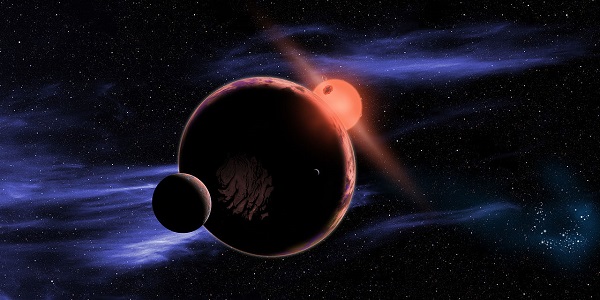
The search for extraterrestrial intelligence remains a high-risk, low-payoff-probability endeavor, with many exciting initial reports that mostly turn out to be false alarms.
The search for other planets, however, continues to pay off in spades. And a team of European astronomers just hit the biggest jackpot yet: a habitable planet orbiting the Sun’s nearest neighbor.
Astronomers using ESO telescopes and other facilities have found clear evidence of a planet orbiting the closest star to Earth, Proxima Centauri. The long-sought world, designated Proxima b, orbits its cool red parent star every 11 days and has a temperature suitable for liquid water to exist on its surface. This rocky world is a little more massive than the Earth and is the closest exoplanet to us — and it may also be the closest possible abode for life outside the Solar System.
Using the radial velocity method, the so-called Pale Red Dot team detected a planet orbiting Proxima Centauri, the nearest star to our sun and one of three in the Alpha Centauri system.
Proxima Centauri is a red dwarf, much cooler and dimmer than the Sun. The new planet, named Proxima b, is very close in, orbiting once every 11 days. That puts it in the star’s habitable zone, the right distance for liquid water to exist on the surface. We don’t have any direct observations of the planet, but the odds are that it’s rocky, roughly Earth-sized, and has water. (See also the analysis in Nature.)
It’s also likely that the planet is tidally locked, with one side always facing its star and the other in permanent night. That doesn’t necessarily rule out life, but a bigger problem is that Proxima Centauri is known to undergo powerful X-ray flares. These periodic eruptions would bathe the planet in radiation and could strip away its atmosphere if it ever had one.
On the other hand, like most red dwarfs, Proxima Centauri has an extremely long lifespan. Unlike our sun, which has about five billion years left to live, it will shine for another four trillion years. If there is or ever will be life on Proxima b, it will have a long time to evolve to cope with the vicissitudes of its home star. And if we ever need to abandon Earth, maybe when the Sun reaches its red-giant phase, this could be a suitable outpost for humanity into the unimaginably far future.
We don’t know much about this planet yet, but we can conceive of the kind of life that could evolve there. You could imagine a tropical sea, tinged sunset red by the glow of a crimson sky, lapping at the shores of a black sand beach, beyond which grows a jungle of blue-leaved plants basking in a never-ending day. And every so often, all the plants in the forest curl up and fold in on themselves, all in unison, when the sun suddenly brightens and spits fire.
This is pure speculation, of course. We don’t know if Proxima b has an atmosphere, let alone life. But if the nearest star to our solar system has a habitable-zone planet, then either we’re stupendously lucky, or planets like this are common in the universe. And if red dwarf stars commonly have planets, then the sheer number of them – there may be as many as 60 billion in the Milky Way – means that the odds of at least one hosting life are greatly improved.
Admittedly, even “the nearest” star, in cosmic terms, doesn’t mean much. Proxima Centauri is about 4 light-years away, more than 250,000 astronomical units (AUs). The farthest-roaming spacecraft launched by humanity, Voyager 1, has only traveled 40 AU since 1977. Clearly, we’re going to have to come up with better propulsion technologies if we ever want to visit.
But if we could achieve even a fraction of the speed of light, it’s not out of the question that a spacecraft, robotic or crewed, could travel there in a human lifetime, and send back data on what it finds. Our Sun may have billions of good years left, but it’s never too early to start making backup plans.
Image: An artist’s conception of a planet orbiting in the habitable zone of a red dwarf star. Via Wikimedia Commons.